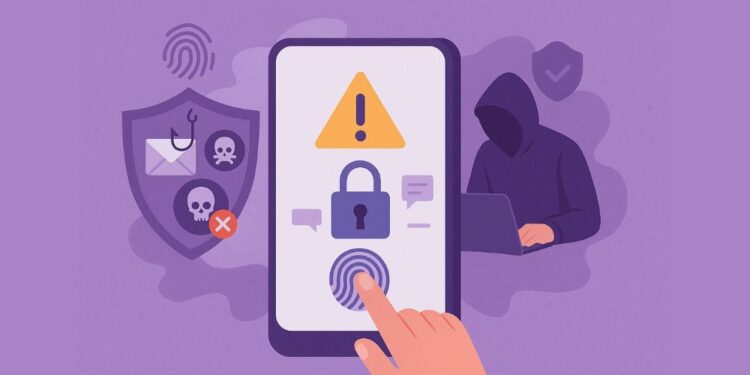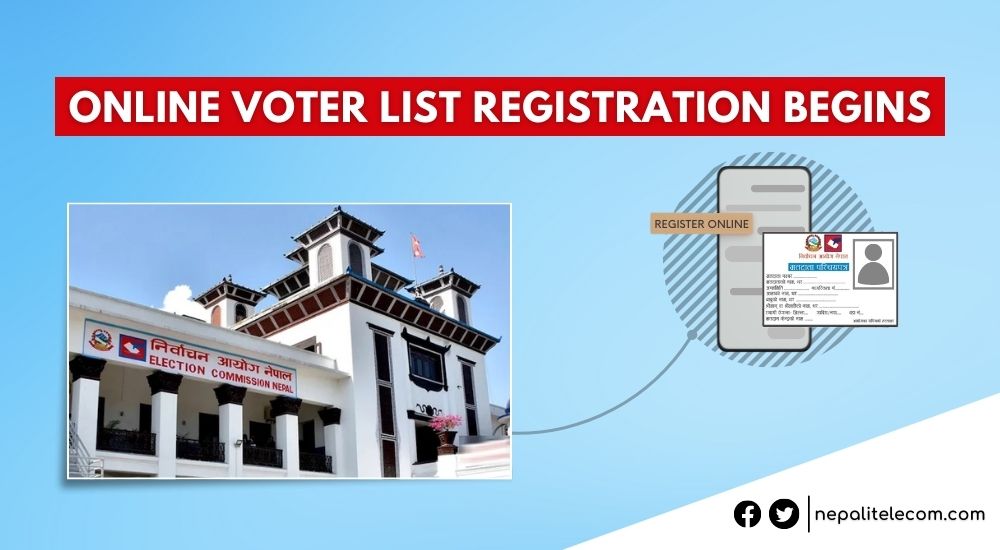by Lajin Maharjan
Mobile phones and data connectivity are part of our daily lives. They are not merely devices for calling and texting; they are wallets, social networks, and even workstations, these days. This evolution brings many positive changes, but it has also inspired increasing threats, such as mobile fraud. As smartphones become increasingly smart, cybercriminals continue to develop more cunning ways to use them.
In Nepal, there are about 30 million mobile phone subscribers, which comes to the total population, according to the Nepal Telecommunications Authority (NTA). The ubiquitous use of mobile phones in urban and rural areas highlights how deeply ingrained these devices are in daily life. But also makes us more vulnerable to cybercrime.
Mobile phones are used for banking, communication, storing personal data, and take public services and this makes an attractive target for hackers/cyber criminals. Criminals now exploit these devices through phishing, malware, identity theft and various other unauthorized ways, making it critical for mobile users to be alert and stay informed about the mobile security.
Growing threat of mobile fraud
Mobile users do not realize that they are responsible for any misuse of the mobile number registered in their name. For example, if someone misuses your number by committing fraud or illegal activity, you could be held accountable. Similarly, users often expose themselves to fraud unknowingly. For example, downloading unverified apps can allow malicious software to access personal data, allowing even to steal money from bank account.
Public Wi-Fi networks also pose security risks, especially if they are spoofed. Hackers can use such networks to capture passwords, financial details, or other personal and sensitive data. Recommended: How to use free Wifi safely?
Compared to bar phones, smartphones are more vulnerable. One example can be OTP (One-Time Passcode) fraud, where users could be tricked to share verification codes that give hackers access to their accounts. Other threats such as International Revenue Sharing Fraud (IRSF), Wangiri and Premium Rate Service (PRS) fraud, involve unauthorized calls or subscriptions that result in high charges for users who dial such numbers. As smartphones are connected to the internet, they face more threats that are complex and damaging for users. For example, mobile banking malware targets banking apps to steal log in details or perform unauthorized transactions. Do read: OTP Verification code problem
Similarly, another fraud is “interconnecting bypass” where fraudsters use SIMBOX devices to manipulate how calls are routed to earn money illegally. Other common attacks include phishing (email-based scams), vishing (voice calls), and smishing (SMS scams), all of them gather personal information with ill intent.
Fake apps or app spoofing are designed to look like trusted ones but steal users’ data once installed. Likewise, mobile ransomware is another threat where fraudsters lock device of users and demand a ransom to unlock it.
Also read: SIM Swap Scam
Rise of social engineering fraud and emerging threats
In the recent years, social engineering fraud has emerged as the most alarming type of fraud. Generally, these frauds rely on human error rather than technological flaws, making them difficult to detect for users. Wi-Fi spoofing is one of the examples, where fraudsters set up fake Wi-Fi networks that appear genuine and steal data from connected devices.
Similarly, another example is app spoofing, wherein attackers create fake apps which looks like genuine one to gain access to user information. QR code scams are also emerging, where users scan a malicious code and land into problem of fake websites or make users download of harmful software automatically.
Identity theft and subscription fraud are other rising cases. In these kinds of frauds, attackers pretend to be trusted organizations to steal personal data or subscribe users to expensive services without their consent. Impersonation is an example. It is a form of identity theft that has now become common.
In this fraud, hackers impersonate as trusted individuals or organizations such as your boss, friend, bank, or a well-known service provider, to the trick victims so that they can give sensitive information, money or access to systems. In light of this growing threat, companies like Ncell, have increased their efforts to protect customers through consumer awareness and technology.
Do not miss: 12 things to consider while using a SIM card
Steps to take if mobile fraud is suspected
If you think you have been targeted by fraudsters, take immediate action that can help reduce potential financial or individual reputation damage. The first thing you need to do is to secure your phone and SIM card to ensure that no one else has access to your device or SIM. Then you should check your recent financial transactions for any dubious activity.
Also, you should update passwords of email, banking apps, social media accounts/handles and set multi-factor authentication as soon as possible. Finally, depending on the gravity of the issue, you should register complaints to relevant parties such as mobile service provider, bank, and the police.
Also read: Youth Arrested for SIM duplication and mobile banking fraud
Importance of digital awareness
While stakeholders such as mobile service providers and banks play an important role in fighting mobile fraud, users themselves must take responsibility for staying safe in digitally connected world. One always needs to keep in mind that clicking on unknown links or scanning QR codes from unverified sources could lead to trouble. If anyone asks for personal information, users should first verify identity of the information seeker before responding.
Similarly, when downloading apps, you need to make sure they are from official app stores and check their reviews. Also, we need to be careful about how much personal information to share over phone calls, messages, or social media, especially to unfamiliar people.
Good digital habits, like using strong passwords, two factor authentication, being skeptical of unexpected messages, and regularly updating software, are simple, yet powerful ways to protect data and devices from unauthorized access.
Read: How to check Ntc Ncell SIM name and transfer ownership?
Ncell’s commitment to mobile security
Ncell always accorded high priority to customers, data privacy, and security to support in preventing mobile fraud. It has implemented 24/7 network monitoring to detect and respond to suspicious activities in real time. It for long has also been working to identify and block fraudulent numbers.
Public awareness campaigns are another part of Ncell’s focus when it comes to creating better customers experience and awareness raising. With huge reach in social media platforms, Ncell has been raising awareness through its official social media pages, SMS, and collective events with the industry partner, regulator and other organizations as a part of social responsibility through Ncell Foundation.
Strengthening cybersecurity, Ncell has also invested in advanced fraud detection tools and real-time analytics that help identify fraud attempts. It strictly abides by the Cyber Security Bylaw 2020 implemented by the regulatory body Nepal Telecommunications Authority (NTA) to protect ICT infrastructure and information systems from various malicious attacks and threats; and to build trust and confidence of users towards using ICT technology and services.
Ncell also holds ISO 27001:2022 Information Security Management System (ISMS) and ISO 27701:2019 Privacy Information Management System (PIMS) certifications, proving its commitment to global standards. In cases of fraud, Ncell works with concerned law-enforcing agencies as per the prevalent laws to provide necessary data to help investigate and resolve issues quickly.
Check out: How to secure from online threats; Best Cybersecurity Practices
Conclusion
Mobile fraud is a serious and growing concern, particularly in markets like ours where the trend of embracing more digital services and connectivity is growing and digital awareness is comparatively low. While companies like Ncell are putting huge effort in security, consumers also have a key role to play for their own security.
By understanding the risks, staying vigilant, and taking swift action when suspicious activity arises, mobile users can reduce their chances of falling victim to fraud. In the end, protecting your mobile life is a shared responsibility, which requires awareness, good habits, and cooperation between all stakeholders.
Lajin Maharjan: The Author serves as a Specialist at Ncell.











